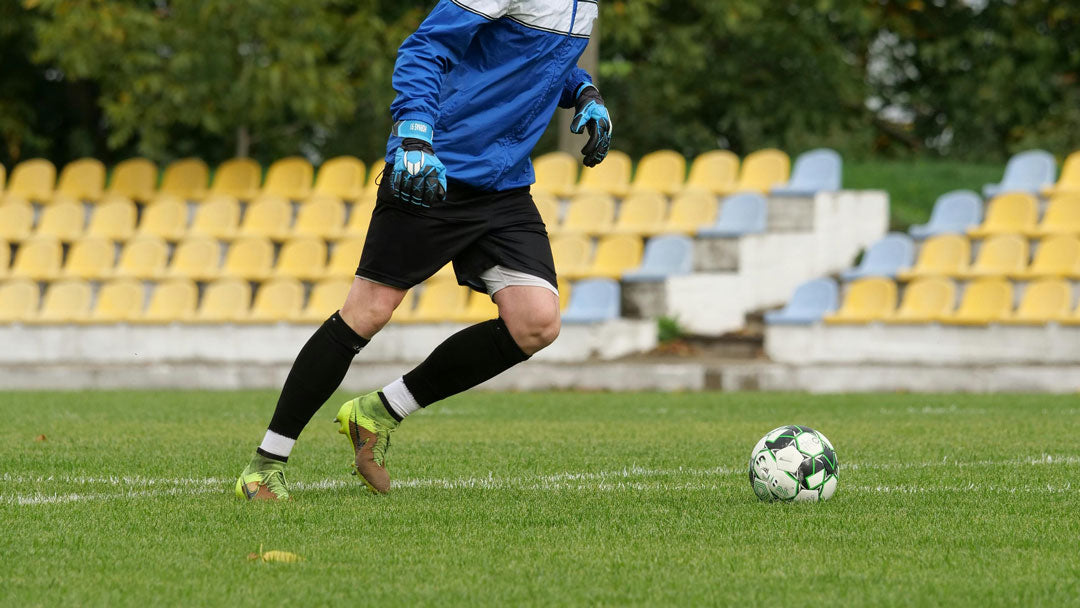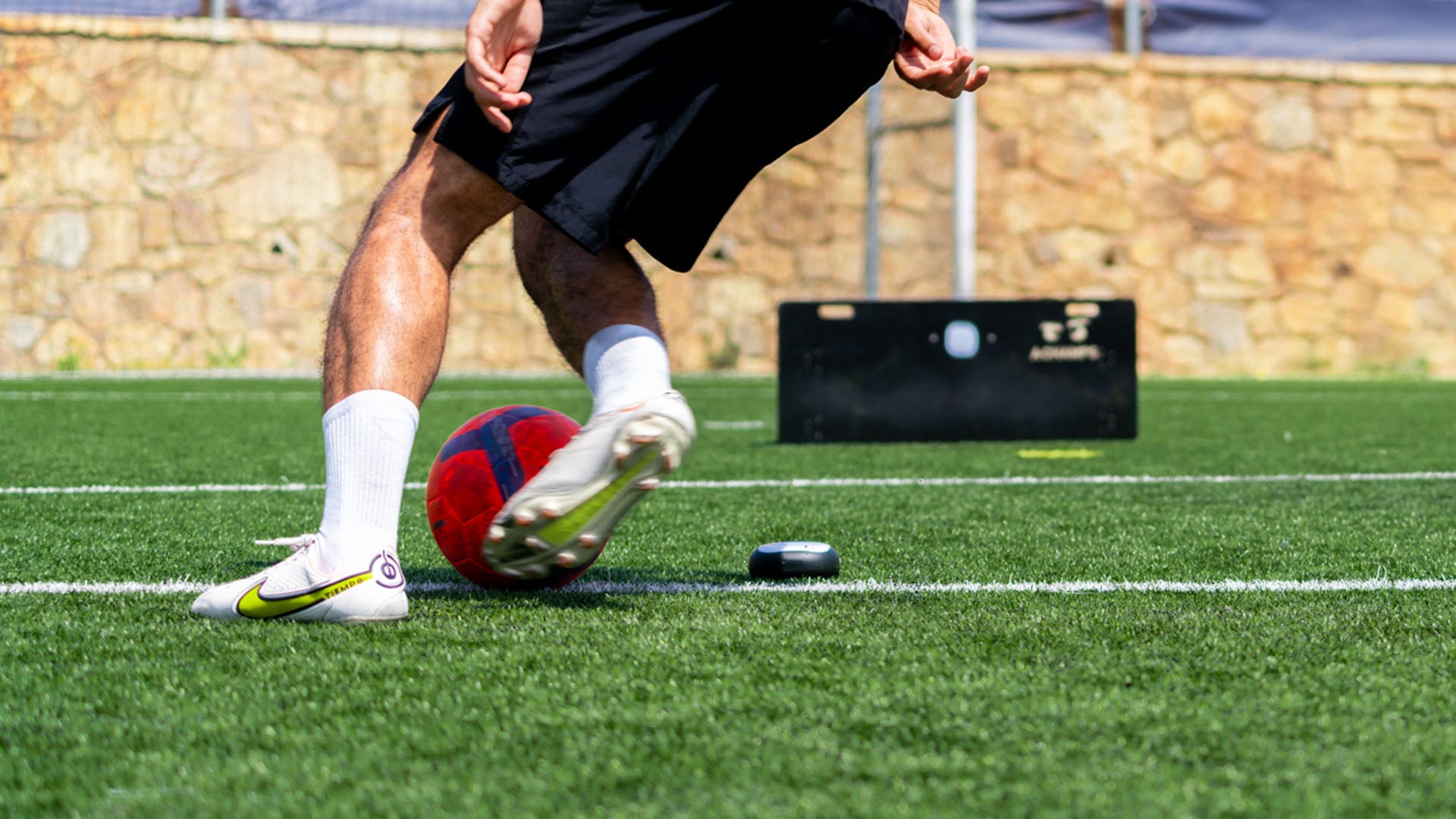Reflex vs Reaction in Sports
The main difference between reflexes and reactions in sports lies in their nature. Reflexes are automatic, instinctual responses like a goalkeeper’s split-second save, while reactions involve deliberate decision-making, such as choosing to pass or shoot. Reflexes can be sharpened through drills that enhance muscle memory, while reactions improve with exercises focusing on anticipation and decision-making. Combining both in training helps athletes achieve speed, agility, and strategic thinking for peak performance.
Reflex vs Reaction: soccer
Soccer, known globally as 'the beautiful game,' is a sport where success hinges on a player's ability to master both reflexes and reactions. These two aspects, though similar in nature, play distinct roles on the soccer field. Understanding and honing each can elevate a player's game to new heights.
In this article we will have a closer look at the differences between reflex v.s reaction and how these two skills are crucial for a soccer peak performance.
Reflex vs Reaction: the goalkeeper's armor
- Instantaneous saves: In soccer, reflexes are most visibly showcased in goalkeepers. Their ability to make split-second saves - diving to block a sudden shot or reflexively stopping a close-range header - is crucial. These actions are largely instinctual, requiring minimal conscious thought.
- Training reflexes: Goalkeepers undergo rigorous training to enhance their reflexes. Drills that involve rapid, unpredictable shots help in developing quicker and more efficient reflex responses. Have a look at our soccer goalkeeper training guide to find some of the best drills to become the best player you can be.
Reflex vs Reaction: the field player's toolkit
- Tactical decision-making: For field players, reaction involves decision-making under pressure. Whether it's choosing to pass, shoot, or dribble, these actions require quick thinking and assessment of the game situation.
- Physical responses: A player's reaction isn't just mental; it's also physical. Adjusting body position, changing direction quickly, and reacting to opponents' movements are all part of a player's reactive arsenal.
The interplay of Reflex and Reaction in soccer
- Reflex and reaction in defense: Defenders use a combination of reflex (like clearing a sudden shot off the goal line) and reaction (like deciding when to tackle or intercept a pass) to protect their goal.
- Midfield mastery: Midfielders, often the link between defense and attack, require a blend of reflex (quickly controlling a fast-passed ball) and reaction (choosing the best option to advance the play).
Training Reflex vs Reaction
- Skill Drills: Soccer training involves drills designed to improve both reflexes and reactions. These include exercises like rapid passing drills for reflexes and small-sided games for reaction-based decision-making.
- Mental Preparation: Understanding game tactics and scenarios improves a player's reactive abilities. Video analysis of matches is a common tool used to enhance this aspect.
Technological advances in training Reaction vs Reflex
In the rapidly evolving world of soccer training, technological advancements are playing a pivotal role in shaping how players enhance their skills. Among these innovations, we stand out with our cutting-edge training tools designed to merge physical activity with digital insights. Our soccer rebounder board and the ROXs System, exemplify how technology can transform traditional training methods into interactive, data-driven experiences.
Soccer rebounder wall: Reflexes vs Reaction times
Our soccer rebounder board is not just a tool for practicing ball control and passing; it's a gateway to improving a player's reflexes and reactions through real-game scenarios.
This innovative device is designed to simulate the unpredictability of a real soccer match, where the ball can come from any direction at any speed. By providing instant feedback on the player's performance, the soccer rebounder wall helps in sharpening reflexes, enhancing decision-making speed, and improving overall agility.
Key features:
- Dynamic feedback: The soccer rebounder board offers immediate feedback on the quality of the touch, pass, or shot, allowing players to adjust their technique in real-time.
- Versatility: Suitable for players of all levels, from beginners to professionals, enabling personalized training sessions tailored to individual needs.
- Data collection: Integrates seamlessly with smart devices to track performance metrics, offering insights into progress and areas for improvement.
The ROXs System: a revolutionary approach to cognitive training
The ROXs System takes training a step further by focusing on the cognitive aspects of soccer. This system uses sensor-based interactive pods that can be placed around the training field to create a dynamic and engaging workout environment.
The ROXs System challenges players not only physically but also mentally, requiring them to make quick decisions while maintaining technical skills under pressure. It’s one of the best ways to train reaction vs reflexes in soccer.
Key Features:
- Cognitive development: Enhances decision-making skills, situational awareness, and reaction times through interactive drills that mimic in-game scenarios.
- Customizable drills: Offers a wide range of drills and games designed to improve various aspects of a player's game, from dribbling to spatial awareness.
- Engagement and motivation: The gamified nature of the ROXs System keeps players engaged and motivated, turning rigorous training sessions into fun and competitive challenges.
The impact of data-driven training: reflex vs reaction
Both the soccer rebounder board and the ROXs System exemplify how data collection and analysis are becoming integral to modern soccer training.
By providing quantifiable feedback on a player's performance, these tools enable a more scientific approach to skill development. Coaches and players can use this data to identify strengths and weaknesses, tailor training programs to address specific needs, and track progress over time.
Reflex vs Reaction: a balancing act in soccer
A successful soccer player needs a balance of reflex and reaction. Over-reliance on reflex can lead to predictable, one-dimensional play, while being too reactive without instinctual play can slow a player down.
Impact of Reflex and Reaction on team dynamics
- Synchronized Team Movement: A team's ability to move and react as a unit is crucial in soccer. This requires players to balance their reflexive actions with reactive strategies, creating a fluid and coordinated team movement.
- Communication and awareness: Players often rely on reflexive understanding of their teammates' tendencies and positions. This unspoken communication is critical in forming an effective team dynamic.
The role of Reflex vs Reaction in high-pressure situations
- Handling pressure in matches: In high-stakes moments, such as penalty shootouts or the final minutes of a close match, a player's ability to maintain composure and balance reflexive skills with thoughtful reactions is key.
- Psychological resilience: Developing mental toughness allows players to better handle these high-pressure situations, making the right reflexive and reactive decisions under stress.
Youth development: teaching Reflex vs Reaction
- Foundational Skills: In youth soccer, emphasis is placed on developing both reflexes and reactive skills. This foundation is crucial for players to adapt and evolve their game as they grow.
- Age-appropriate drills: Coaches design age-appropriate drills that gradually enhance a young player's reflexes and reaction times, tailored to their developmental stage.
The psychological aspect: Reaction vs Reflex
Cognitive training
- Mental exercises: Cognitive exercises aimed at improving concentration, decision-making speed, and situational awareness are integral to enhancing both reflex and reaction skills in soccer.
- Stress Management: Techniques for managing stress and anxiety are crucial for players to maintain optimal reflex and reaction abilities during crucial moments in the game.
Future Trends in Soccer Training
- Innovative Methods: The future of soccer training will likely see a continued integration of technology and novel training methodologies focused on optimizing reflex and reaction skills, such as our soccer rebounder wall.
- Focus on Holistic Development: Emphasizing the development of the whole athlete, including mental, emotional, and social aspects, is becoming increasingly important in the realm of soccer training.
Conclusion
In soccer, reflex and reaction are two sides of the same coin. Mastering them can be the difference between a good player and a great one. As the game evolves, so too must the players' abilities to respond instinctively and think strategically. Whether it’s the goalkeeper’s lightning-fast reflex save or the midfielder’s clever, reactive playmaking, both skills are essential in the art of soccer.
The integration of technology like A-Champs' Soccer Rebounder and ROXs System into soccer training represents a significant shift towards a more interactive, data-driven approach. These tools not only enhance physical skills such as reflexes and reaction times but also improve cognitive abilities, crucial for high-level performance in soccer.
As the game continues to evolve, the adoption of such technologies will likely become the standard, offering players at all levels the opportunity to maximize their potential in the beautiful game.





Hinterlasse einen Kommentar
Diese Website ist durch hCaptcha geschützt und es gelten die allgemeinen Geschäftsbedingungen und Datenschutzbestimmungen von hCaptcha.